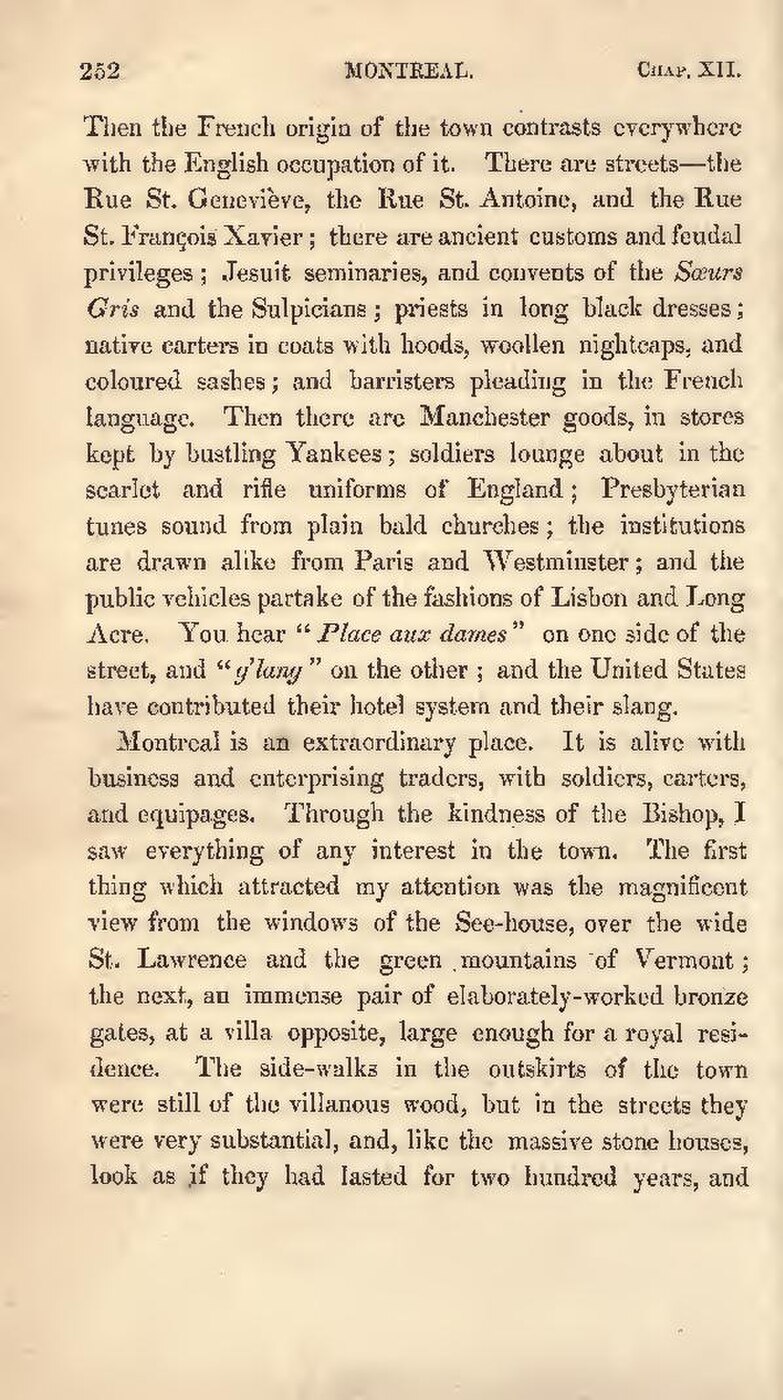Then the French origin of the town contrasts everywhere with the English occupation of it. There are streets—the Rue St. Geneviève, the Rue St. Antoine, and the Rue St. François Xavier; there are ancient customs and feudal privileges; Jesuit seminaries, and convents of the Sœurs Gris and the Sulpicians; priests in long black dresses; native carters in coats with hoods, woollen nightcaps, and coloured sashes; and barristers pleading in the French language. Then there are Manchester goods, in stores kept by bustling Yankees; soldiers lounge about in the scarlet and rifle uniforms of England; Presbyterian tunes sound from plain bald churches; the institutions are drawn alike from Paris and Westminster; and the public vehicles partake of the fashions of Lisbon and Long Acre. You hear "Place aux dames" on one side of the street, and "g'lang" on the other; and the United States have contributed their hotel system and their slang.
Montreal is an extraordinary place. It is alive with business and enterprising traders, with soldiers, carters, and equipages. Through the kindness of the Bishop, I saw everything of any interest in the town. The first thing which attracted my attention was the magnificent view from the windows of the See-house, over the wide St. Lawrence and the green mountains of Vermont; the next, an immense pair of elaborately-worked bronze gates, at a villa opposite, large enough for a royal residence. The side-walks in the outskirts of the town were still of the villanous wood, but in the streets they were very substantial, and, like the massive stone houses, look as if they had lasted for two hundred years, and
